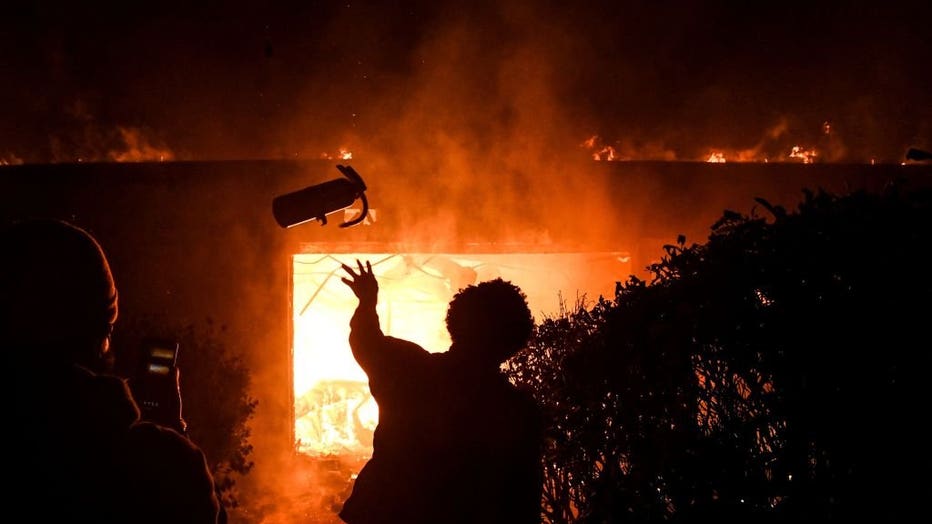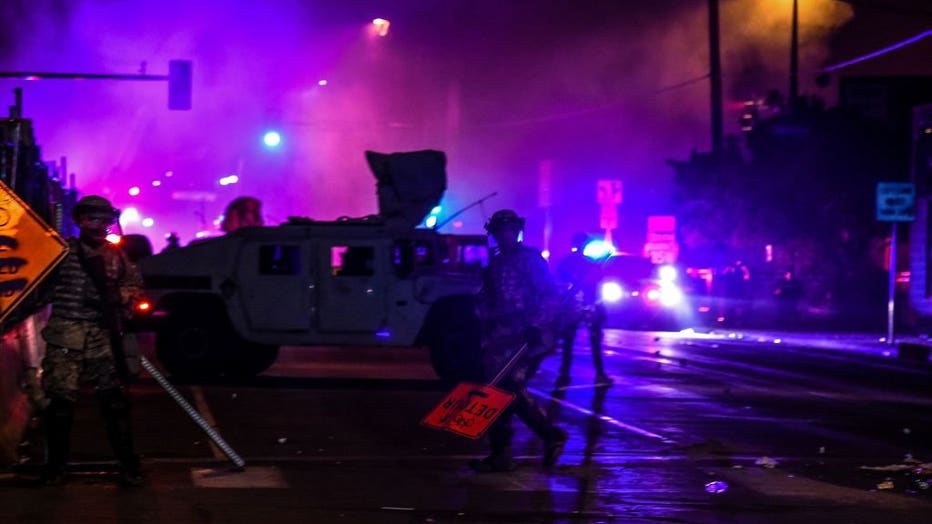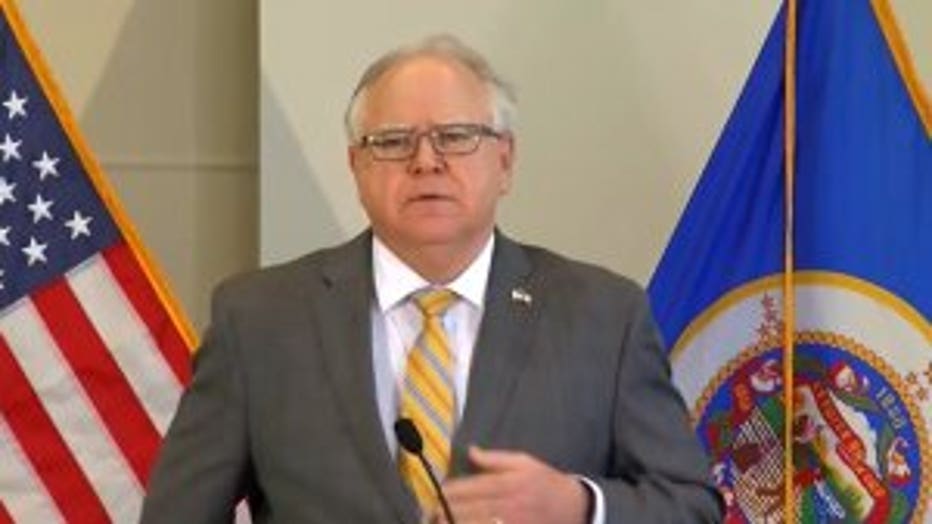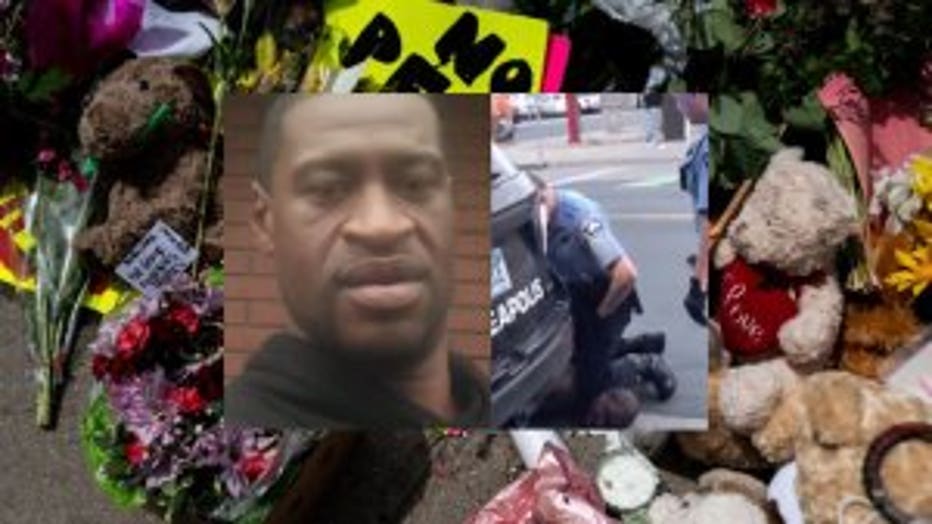Thousands ignore Minneapolis curfew as U.S. protests spread
MINNEAPOLIS — Thousands of protesters ignored a curfew and vows of a forceful police response to take to the Minneapolis streets for a fourth straight night, as the anger stoked by the police killing of George Floyd spread to more cities across the U.S.
The Pentagon on Saturday ordered the Army to put military police units on alert to head to the city on short notice at President Donald Trump’s request, according to three people with direct knowledge of the orders who did not want their names used because they were not authorized to discuss the preparations. The rare step came as the violence spread to other cities: a man shot dead in Detroit, police cars battered in Atlanta and skirmishes with police in New York City.
Criminal charges filed Friday morning against the white officer who held his knee for nearly nine minutes on the neck of Floyd, a black man, did nothing to stem the anger. Derek Chauvin, 44, was charged with third-degree murder and second-degree manslaughter.

TOPSHOT - A protester throws a fire extinguisher in a burning building during a demonstration in Minneapolis, Minnesota, on May 29, 2020, over the death of George Floyd, a black man who died after a white policeman kneeled on his neck for several min
Minneapolis police said shots had been fired at law enforcement officers during the protests but no one was injured.
As the night dragged on, fires erupted across the city's south side, including at a Japanese restaurant, a Wells Fargo bank and an Office Depot. Many burned for hours, with firefighters again delayed in reaching them because areas weren't secure.

US National Guards disperse protesters from a street during a demonstration in Minneapolis, Minnesota, on May 29, 2020, over the death of George Floyd, a black man who died after a white policeman kneeled on his neck for several minutes. - Violent pr
Shortly before midnight, scores of officers on foot and in vehicles moved in to curb the violence, one day after city and state leaders faced blowback for their handling of the crisis. On Thursday, protesters had torched a police station soon after it was abandoned by police and went on to burn or vandalize dozens of businesses.

Minnesota Gov. Tim Walz
The new round of unrest came despite Gov. Tim Walz vowing early in the day to show a more forceful response by the state than the one Thursday run by Minneapolis city leaders. But by early Saturday morning, Walz was acknowledging he didn't have enough manpower, even with some 500 Guard soldiers.
“We do not have the numbers,” Walz said. “We cannot arrest people when we are trying to hold ground.”
Walz said he was moving quickly to mobilize more than 1,000 more Guard members, for a total of 1,700, and was considering the potential offer of federal military police. But he warned that even that might not be enough, saying he expected another difficult night Saturday.
The Minnesota Police and Peace Officers Association urged Walz to accept any help.
“You need more resources,” the group said in a tweet. “Law enforcement needs leadership.”
Not all the protests were violent. Downtown, thousands of demonstrators encircled a barricaded police station after the 8 p.m. Friday curfew. “Prosecute the police!” some chanted, and “Say his name: George Floyd!” Some protesters sprayed graffiti on buildings.
Anger filled the streets of Minneapolis.
Ben Hubert, a 26-year-old local resident, said he wasn’t surprised people were breaking curfew and setting fires.
“I’m outraged,” he said of the Floyd case. “But I’m also sad. The injustice has been going on for so long. It’s been swelling for years.”
Chauvin was also was accused of ignoring another officer who expressed concerns about Floyd as he lay handcuffed on the ground, pleading that he could not breathe while Chauvin pressed his knee into his neck for several minutes. Floyd, who was black, had been arrested on suspicion of using a counterfeit bill at a store.
Chauvin, who was fired along with three other officers who were at the scene, faces more than 12 years in prison if convicted of murder.
An attorney for Floyd’s family welcomed the arrest but said he expected a more serious murder charge and wants the other officers arrested, too.
Prosecutor Mike Freeman said more charges were possible, but authorities “felt it appropriate to focus on the most dangerous perpetrator.”
Protests nationwide have been fueled by outrage over Floyd’s death and years of police violence against African Americans. Protesters smashed windows at CNN headquarters in Atlanta, set a police car on fire and struck officers with bottles. Large demonstrations in New York, Houston, Washington, D.C., and dozens of other cities ranged from people peacefully blocking roads to repeated clashes with police.
“You are disgracing our city,” Atlanta Mayor Keisha Lance Bottoms told protesters. “You are disgracing the life of George Floyd and every other person who has been killed in this country.”
Police were trying to put Floyd in a squad car Monday when he stiffened and fell to the ground, saying he was claustrophobic, a criminal complaint said. Chauvin and Officer Tou Thoa arrived and tried several times to get the struggling Floyd into the car.
Chauvin eventually pulled Floyd out of the car, and the handcuffed Floyd went to the ground face down. Officer J.K. Kueng held Floyd’s back and Officer Thomas Lane held his legs while Chauvin put his knee on Floyd’s head and neck area, the complaint said.
When Lane asked if Floyd should be rolled onto his side, Chauvin said, “No, staying put is where we got him.” Lane said he was “worried about excited delirium or whatever.”
An autopsy said the combined effects of being restrained, potential intoxicants in Floyd’s system and his underlying health issues, including heart disease, likely contributed to his death. It revealed nothing to support strangulation as the cause of death.
There were no other details about intoxicants, and toxicology results can take weeks. In the 911 call that drew police, the caller describes the man suspected of paying with counterfeit money as “awfully drunk and he’s not in control of himself.”
After Floyd apparently stopped breathing, Lane again said he wanted to roll Floyd onto his side. Kueng checked for a pulse and said he could not find one, according to the complaint.
Chauvin’s attorney had no comment when reached by The Associated Press.
The prosecutor highlighted the “extraordinary speed” in charging the case four days after Floyd’s death and defended himself against questions about why it did not happen sooner. Freeman said his office needed time to gather evidence, including what he called the “horrible” video recorded by a bystander.

President Trump said Friday that he’d spoken to Floyd’s family and “expressed my sorrow.”
He called video of the arrest “just a horrible thing to witness and to watch. It certainly looked like there was no excuse for it.”
Attorney Benjamin Crump, who is representing Floyd’s family, asked to take custody of Floyd’s body for an independent autopsy.
The doctor who will do the autopsy is Michael Baden, former chief medical examiner of New York City, who was hired to do an autopsy for Eric Garner, a black man who died in 2014 after New York police placed him in a chokehold and he pleaded that he could not breathe.
State and federal authorities also are investigating Floyd’s death.

